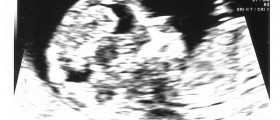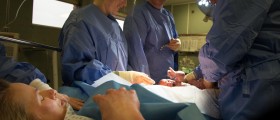
During pregnancy, the mother may experience contractions which make the uterus tighter and blood supply from the placenta decreased. These factors may lead to complications during pregnancy, even though many babies deal with them well. However, if you desire to keep an eye on these changes, fetal monitoring is the right choice.
One possible way of monitoring your pregnancy and especially delivery involves a midwife using a stethoscope or a hand-help Doppler device in order to track the baby's heartbeat frequency. If any anomalies are noticed during this procedure, measures are taken in order to treat the baby for any underlying health conditions. None of the methods used for tracking your baby's heartbeats is harmful for you or the fetus in any possible way.
The procedure involves you lying still for about a minute, being allowed to move around afterwards. During the first stage of labor, the baby is monitored every 15 minutes, while during the pushing stage, the monitoring is performed every 5 minutes.
However, if these first types of monitoring show reasons for concern, regarding the health of your baby, electronic fetal monitoring may be a necessity.
Electronic Fetal Monitoring
This type of monitoring is necessary if the mother has pre-eclampsia or diabetes. Also, this approach is used if the mother has previously given birth through cesarean section. Other reasons for this method are small size of the baby, premature labor, presence of twins or other multiples, the presence of meconium in the water, fetal heart problems, high body temperature of the mother, vaginal bleeding during labor or usage of oxytocin drip. Additionally, electronic fetal monitoring is necessary every 30 minutes, in case of epidural anesthesia.
The process involves placing two electronic sensors, one on the top of your tummy and the other over the heart of the baby, both being secured by elastic belts. The sensors read the heart beats of both the mother and the baby, producing a graph.
Alternatively, a small clip electrode may be connected to your baby's scalp, gathering information regarding the heartbeat. This approach is considered to be the most accurate type of fetal monitoring.
If Things Go Wrong
Sometimes, the readings of the electronic fetal monitoring may be abnormal. Then, once the medical staff notices this, the scalp of your baby may have to be stroked in order for the heartbeats to get more balanced or a small blood sample may need to be taken from the scalp area in order to test for oxygen levels. The samples are taken with a needle being inserted into the mother's vagina.
Keep in mind that standing or sitting will make electronic fetal monitoring much easier for you. So, ask whether you are allowed to assume any of these positions. Also, these types of monitoring can be done at home, even during labors which take place in baths or birth pools.
















Your thoughts on this
Loading...